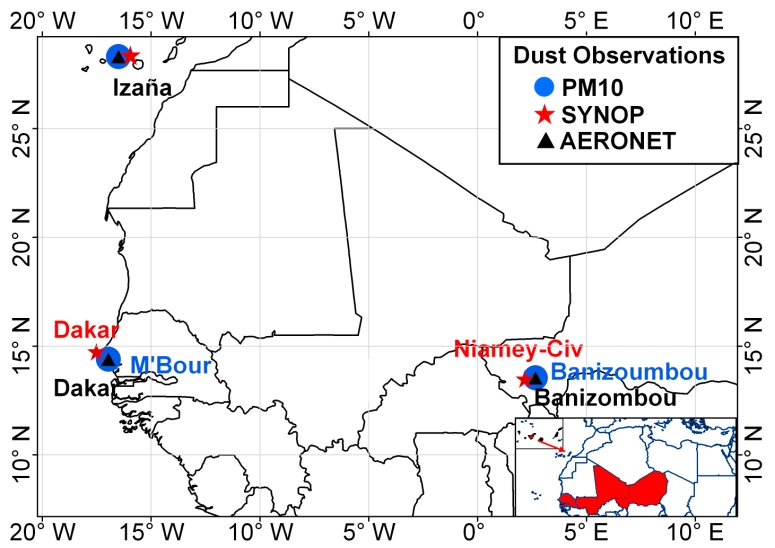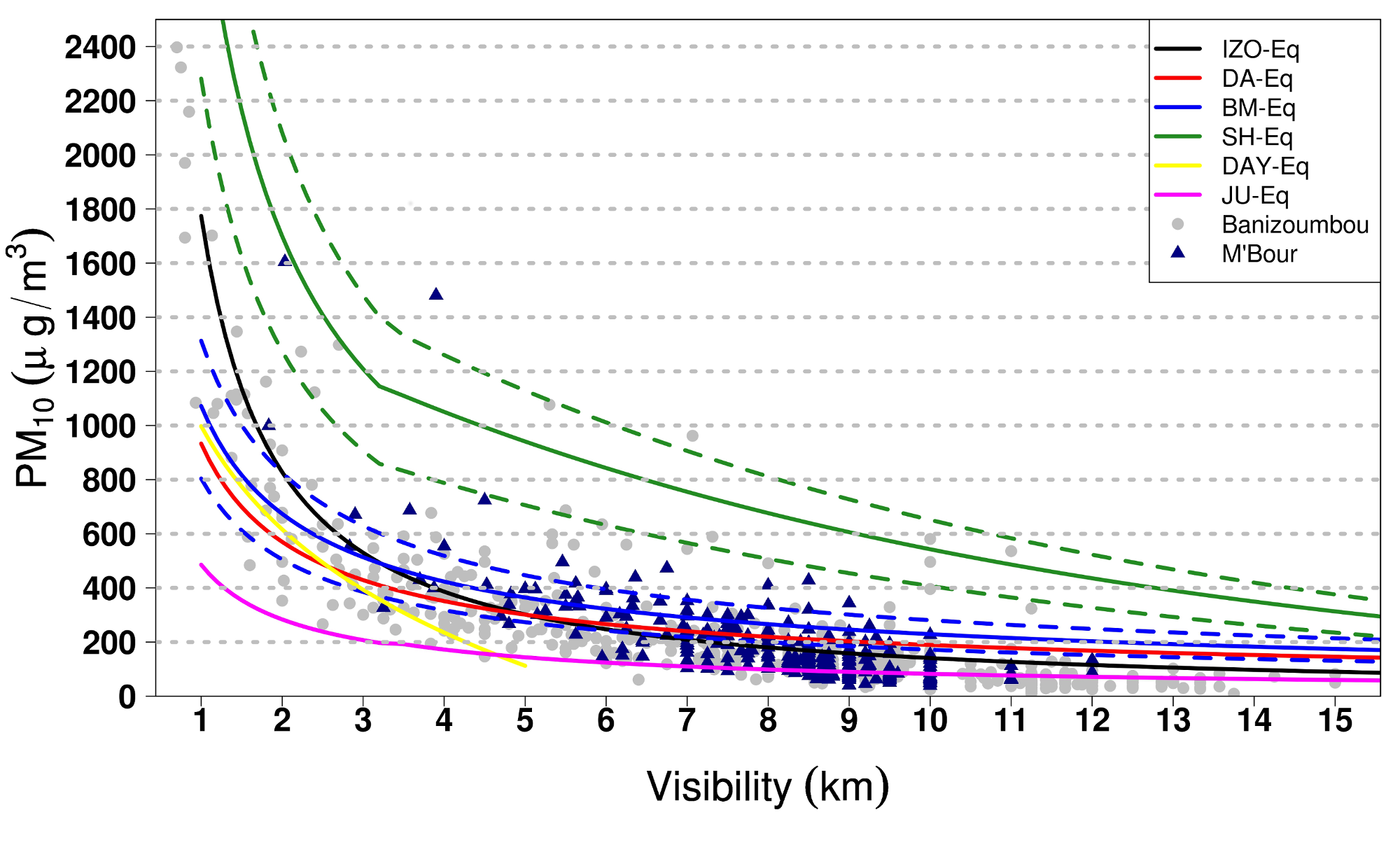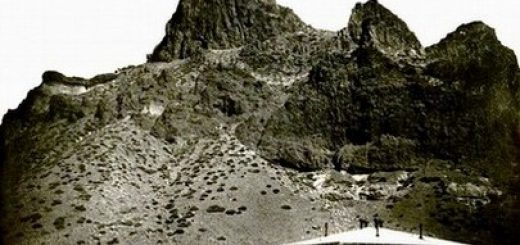A new empirical equation relating visibility with PM10 concentration in North Africa has been published
![]()
The results of an investigation in which a new experimental equation relating the horizontal visibility with surface dust concentration (PM10) is proposed have just been published in the journal Aeolian Research.
The full article reference is:
Camino, C., E. Cuevas, S. Basart, S. Alonso-Pérez, J.M. Baldasano, E. Terradellas, B. Marticorena, S. Rodríguez, A. Berjón, An empirical equation to estimate mineral dust concentrations from visibility observations in Northern Africa, Aeolian Research, Vol. 16, Pages 55–68, March 2015.
It can be downloaded at:
http://authors.elsevier.com/a/1Q5fW6gYtMoDXc
The determination of a new empirical equation relating horizontal visibility and mineral desert dust concentration (PM10), called (IZO-Eq), obtained at the Izaña Atmospheric Observatory (IZO, 28.30 ° N, 16.49 ° W, 2367, Tenerife, Spain), using data recorded during Saharan dust intrusions between 2003 and 2010 is described in this article. This equation has been validated in the Sahel region during the dry and wet seasons (2006-2008) using data from two PM10 monitoring stations from the “African Monsoon Multidisciplinary Analysis” (AMMA) International project, and data from weather the nearest synoptic stations.

Location of the PM10 monitoring sites (blue circles), meteorological stations (red starts) and AERONET stations (black triangles) near PM10 monitoring sites used in the present analysis.
The PM10 estimated by IZO-Eq has been compared with those PM10 estimated by other empirical equations and with surface dust concentrations simulated by the NMMB/BSC-Dust model. IZO-Eq presents a better performance than the other equations. IZO-Eq is also able to reproduce the variability of surface dust concentration simulated by NMMB/BSC-dust.

PM10 daily means (µg/m3) versus visibility daily means (km) for each AMMA site during the dry season for the period 2006-2008. Banizoumbou and M’Bour are represented by grey dots and blue triangles, respectively. Lines represent the estimated PM10 by IZO-Eq (black), DA-Eq (red), BM-Eq (yellow), SH-Eq (green) and DAY-Eq (purple). Since BM-Eq and SH-Eq provide TSP, the estimated values are converted to PM10 using an averaged TSP/PM10 ratio of 0.80 obtained at Banizoumbou station.
For visibilities above 10 km, empirical equations cannot be used to estimate PM10, since above this threshold the equations estimate a nearly constant PM10 value regardless of the visibility range.
This article also provides a performance review of the visibility-PM10 empirical equations most widely used today.
This work was performed within the framework of the European project MACC-II (Monitoring Atmospheric Composition and Climate, Phase 2).






